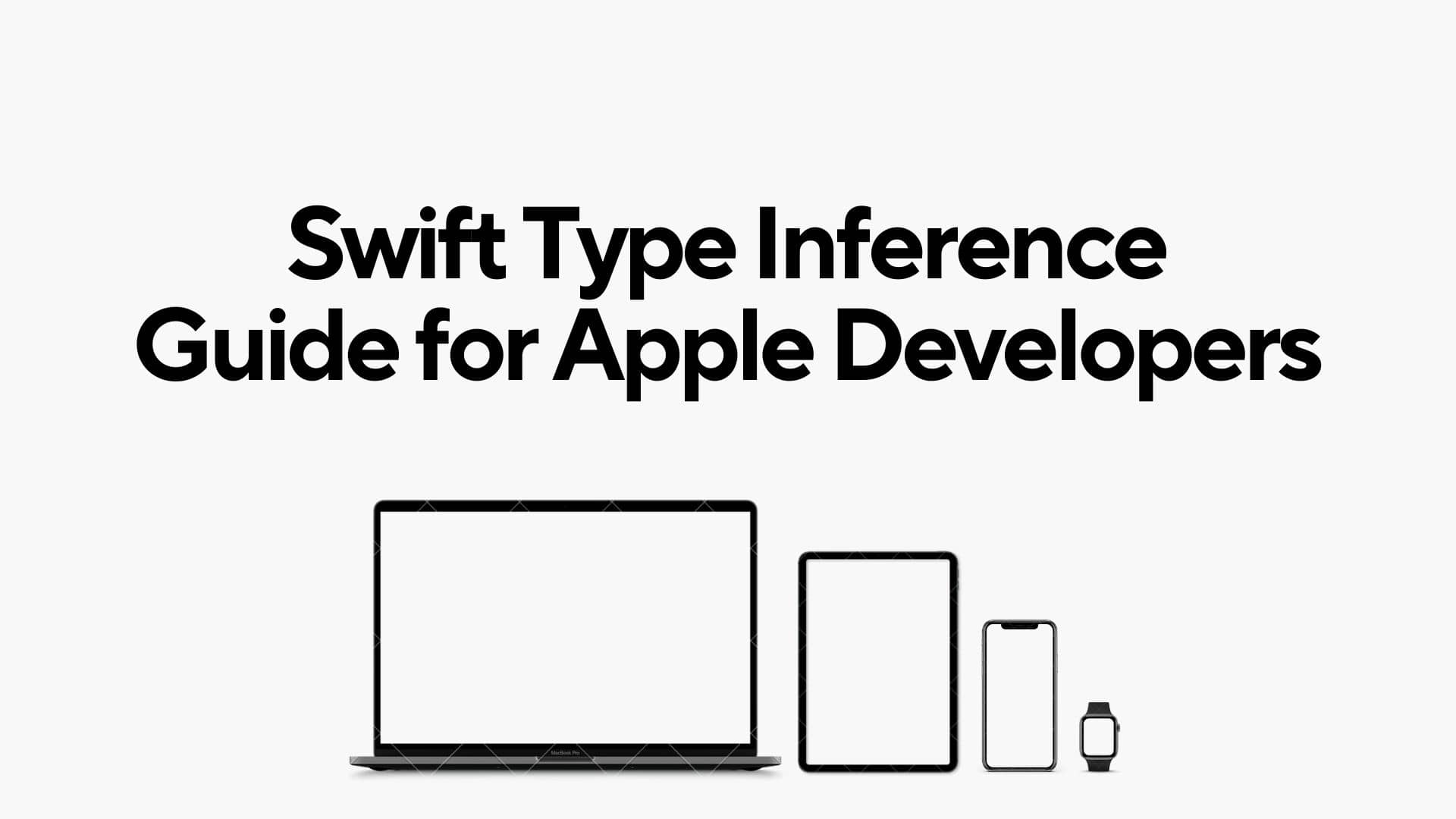Swift Type Inference: Guide for Apple Developers

As Apple developers, harnessing the full potential of the Swift programming language is essential for creating robust and efficient applications.
Swift has a powerful feature known as type inference, which significantly contributes to the language's clarity and conciseness
In this article, we'll delve into the intricacies of Swift type inference, exploring how it enhances code readability, reduces verbosity, and showcasing how it elevates the quality of our applications.
Understanding Swift Type Inference: The Basics
Swift, known for its commitment to clarity and safety, employs a type-safe system. Type inference is the mechanism by which Swift determines the type of a value or expression without explicit developer annotations. This feature enables developers to write cleaner, more expressive code by allowing Swift to deduce types based on context and initialization.
Implicit Type Declarations
In Swift, the compiler can infer the type of a variable or constant from its initial value. Consider the following example:
let myString = "Hello, Swift!"Here, the compiler deduces that myString is of type String because it is initialized with a string literal. This eliminates the need for explicitly declaring the type, making the code more concise and readable.
Function Return Type Inference
Swift extends type inference to function return types. When a function's body consists of a single expression, the compiler can deduce the return type without requiring explicit annotation. For instance:
func add(a: Int, b: Int) -> Int {
return a + b
}In this example, the return type Int is inferred by the compiler based on the addition operation.
Type Inference with Optionals
Optionals, a powerful feature in Swift, benefit significantly from type inference. Consider the following scenario:
var optionalString: String? = "This is optional"
Here, the compiler infers that optionalString is of type String? due to the explicit declaration of the optional type. Swift's type inference system seamlessly integrates with optionals, making code safer and more concise.
Generics and Type Inference
Swift's generics, a cornerstone of the language, also benefit from type inference. When using generic functions or types, the compiler deduces the appropriate types based on the provided arguments or context. This results in code that is not only more readable but also more flexible.
Type Inference in Collection Literals
Swift’s collection literals provide another context where type inference shines. When initializing arrays, dictionaries, or other collections, the compiler can deduce the contained type:
let numbers = [1, 2, 3, 4, 5] // Inferred type: [Int]
This feature simplifies code, allowing developers to focus on the data rather than specifying types explicitly.
Potential Pitfalls and Best Practices
While Swift's type inference is a powerful ally, it's essential to be mindful of potential pitfalls. Over reliance on complex expressions or ambiguous context may lead to unintended type deductions. In such cases, judicious use of explicit type annotations can enhance code clarity.
As a best practice, strive for a balance between leveraging type inference for conciseness and providing explicit type information where it improves code readability and understanding, especially in larger codebases or when collaborating with a team.
Conclusion
Swift's type inference is a testament to the language's commitment to developer productivity and clarity. By allowing the compiler to deduce types intelligently, developers can write more expressive and concise code without sacrificing safety. Embracing and mastering Swift's type inference empowers us to build maintainable and efficient applications, setting the stage for a seamless and enjoyable development experience.